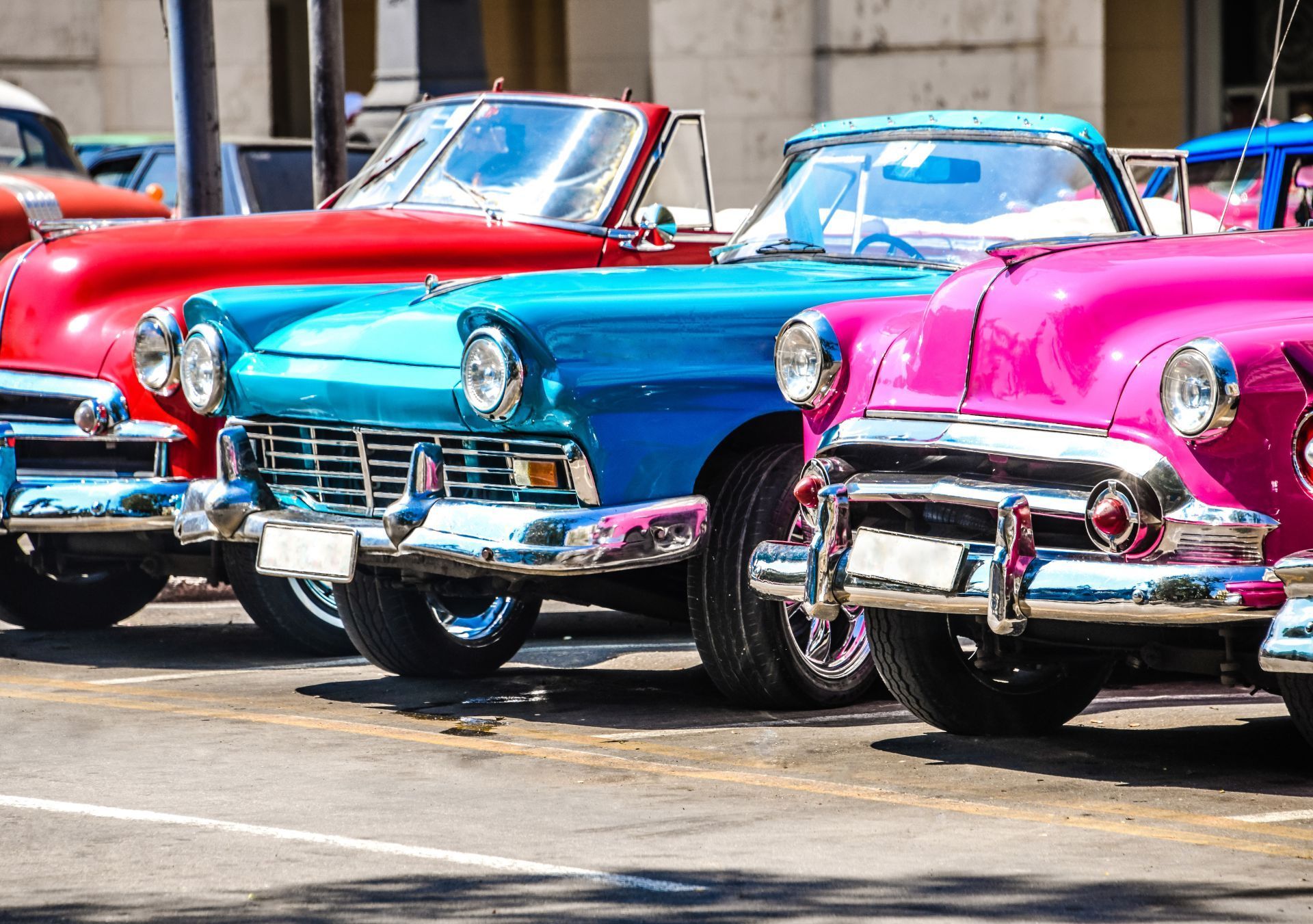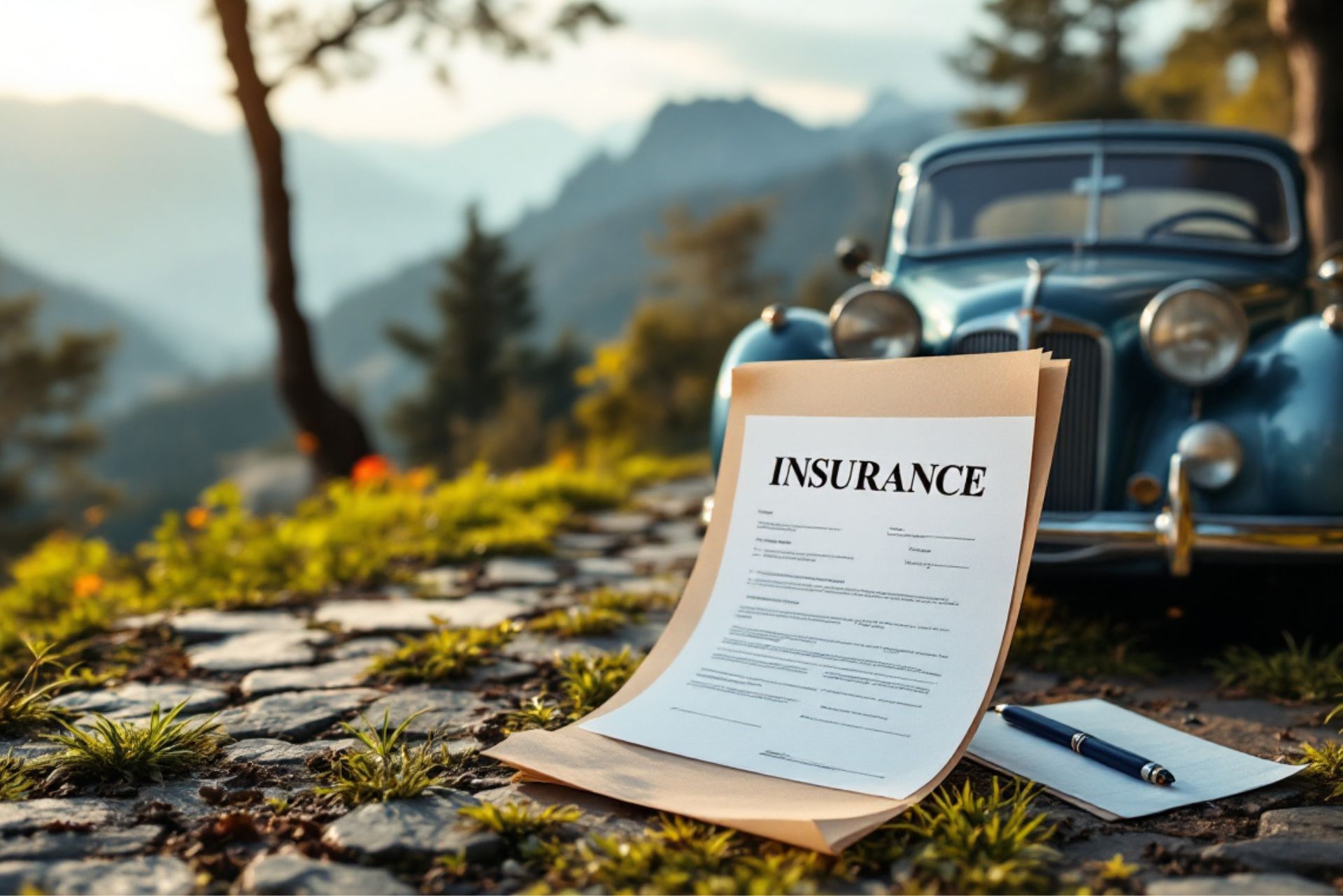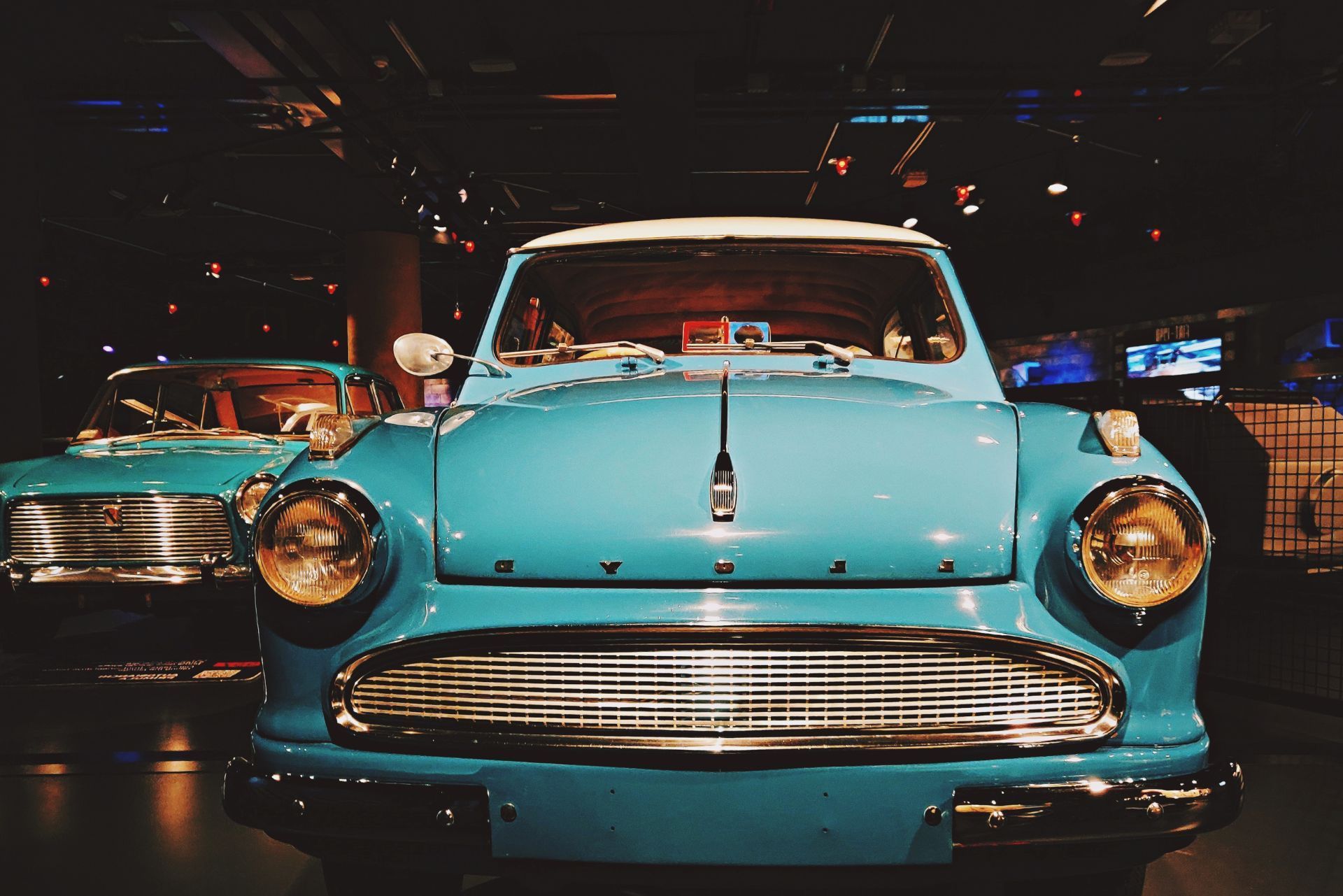
Most Common Personal Policies
Index
Contact Us
Owning a vintage car is not just about enjoying a piece of automotive history; it also comes with unique responsibilities, especially when it comes to insurance. Vintage car insurance is tailored to meet the specific needs of classic car enthusiasts, ensuring that your investment is well-protected. In this article, we will delve into the ins and outs of vintage car insurance, exploring its importance, key features, and how to find the right coverage.
Understanding Vintage Car Insurance
Vintage car insurance is designed specifically for vehicles that are considered classic or antique due to their age, rarity, and historical significance. These vehicles often hold a sentimental value and can be a substantial investment for their owners. Unlike standard auto insurance policies, vintage car insurance addresses the unique aspects of owning such vehicles, from limited use to collectible status. Many vintage car enthusiasts view their vehicles not just as modes of transportation, but as cherished pieces of history that deserve special protection and care.
What is Vintage Car Insurance?
Essentially, vintage car insurance is a specialized policy that provides coverage for classic cars, which typically must meet specific criteria. These vehicles are often over 20 to 25 years old, maintained in good condition, and rarely driven for everyday use. The insurance comprises aspects such as liability, collision, and comprehensive coverage, specifically tailored to meet the needs of vintage car owners. Additionally, some policies may offer coverage for spare parts and accessories, recognizing that many vintage cars require unique components that can be difficult to replace or repair.
Importance of Vintage Car Insurance
The importance of vintage car insurance cannot be overstated. Unlike regular vehicles, vintage cars require specialized care and consideration due to their value and rarity. Standard auto insurance may not provide sufficient coverage in the event of a total loss, theft, or damage. Moreover, vintage car insurance often includes agreed value coverage, which protects car owners by providing the true value of the car in case of a claim. Thus, having tailored coverage avoids the pitfalls commonly associated with standard car insurance. Furthermore, many vintage car owners participate in car shows, rallies, and other events where their vehicles are on display, making it crucial to have insurance that covers potential liabilities arising from these activities. This specialized coverage can also extend to transportation, ensuring that the car is protected while being shipped to a show or event, which is a common concern for many collectors.

Key Features of Vintage Car Insurance
Vintage car insurance is distinct from regular auto insurance, offering features that are specifically beneficial for classic car owners. These features ensure that vintage car enthusiasts have adequate protection without breaking the bank.
Coverage Options for Vintage Cars
Coverage options for vintage cars typically include liability coverage, which protects you against claims from injuries or damages caused to others, and comprehensive coverage that shields your vehicle against theft, vandalism, and natural disasters. Additionally, collision coverage is important for vintage cars, as it covers damage to your car in the event of an accident.
Moreover, many vintage car insurance policies offer additional coverage options like roadside assistance, which can be a lifesaver during vintage car rallies or shows. Other features may include transport coverage and coverage for spare parts, catering to the unique needs of vintage car owners. For instance, transport coverage ensures that your vehicle is protected while being transported to and from events, while spare parts coverage acknowledges that sourcing original components can be both challenging and costly, providing a safety net for owners investing in their classic cars.
Agreed Value Coverage
One of the most attractive features of vintage car insurance is agreed value coverage. This means that policyholders and insurers agree on the value of the car at the time the policy is initiated. In the event of a total loss, the insurance company compensates the owner with the previously agreed value, protecting owners from depreciation discrepancies found in standard insurance policies.
This type of coverage gives vintage car owners peace of mind knowing that they will be adequately compensated for their investment should anything happen to their vehicle, allowing them to work on restoration and maintenance without the anxiety of potential financial loss. Furthermore, this arrangement encourages owners to keep their cars in pristine condition, as they are incentivized to maintain the agreed value through regular upkeep and enhancements, ensuring that their classic cars remain not only a passion but also a sound investment.
Additionally, many vintage car insurance providers offer specialized services, such as expert appraisals, to help owners accurately determine the value of their vehicles. This can be particularly beneficial for those who may not be fully aware of the current market trends or the unique characteristics that can influence a vintage car's worth. By engaging with professionals who understand the nuances of classic vehicles, owners can make informed decisions about their insurance coverage and restoration projects, further enhancing the overall experience of being a vintage car enthusiast.
How to Qualify for Vintage Car Insurance
Qualifying for vintage car insurance involves meeting specific criteria set by insurers. Understanding these criteria is crucial as it ensures you can take advantage of specialized coverage designed for vintage automobiles.
Age and Usage of the Car
Typically, to qualify for vintage car insurance, the vehicle must be a certain age, often at least 20 to 25 years old. However, the age requirement can vary depending on the insurer's definition of vintage or classic. In addition to age, insurance providers will evaluate how often the car is used. Most vintage car insurance policies limit the annual mileage to ensure the vehicle remains a collector’s item rather than a daily driver.
The limited use is crucial for maintaining your car's classic status and securing the appropriate insurance coverage. It’s imperative to keep records of how you use the car, as under-utilization helps in qualifying for vintage car insurance. Some insurers may even require you to join a vintage car club or participate in classic car events, which can further demonstrate your commitment to preserving the vehicle's heritage and ensuring it is treated as a collector's item.
Storage and Maintenance Requirements
Insurers often require vintage car owners to meet specific storage and maintenance criteria to qualify for coverage. Proper storage is paramount; the vehicle should be kept in a secure garage or designated storage facility to protect it from weather-related damages and theft.
Additionally, regular maintenance is critical. Insurers may ask for documentation proving that the vehicle is well-maintained, which can include service records or recommendations from certified mechanics who specialize in vintage cars. Keeping your car in good condition not only aids in insurance qualifications but also ensures its longevity. Many vintage car owners also invest in specialized maintenance products designed for older vehicles, such as non-abrasive cleaners and protective waxes, to preserve the original finish and components. Furthermore, participating in restoration workshops or seminars can enhance your understanding of vintage car care, making you a more informed owner and potentially lowering your insurance premiums.
Cost of Vintage Car Insurance
The cost of vintage car insurance can vary significantly based on several factors. Understanding what influences the premium can help you make informed decisions when selecting a policy.
Factors Affecting the Insurance Premium
Several factors play a role in determining vintage car insurance premiums. These include the vehicle's make, model, and overall condition, as well as the owner's driving history and claims history. Insurance providers will often assess how well the vehicle is maintained and its rarity, as more valuable or rare cars generally lead to higher premiums.
Additionally, factors such as location, the frequency of use, and the level of agreed value coverage can impact costs. It’s crucial to consult with multiple insurers to determine the best price and coverage option tailored to your specific situation. For instance, living in an area with a high rate of vehicle theft or accidents can lead to increased premiums, while a well-maintained garage can mitigate some of those risks. Furthermore, the age of the driver and their experience with vintage vehicles can also play a significant role; younger drivers or those new to vintage cars may face higher rates due to perceived risk.
Ways to Lower Your Vintage Car Insurance Cost
There are several strategies vintage car owners can employ to lower their insurance costs. First, consider increasing the deductible amount; a higher deductible can lower your premium without sacrificing coverage.
Another way is to join vintage car clubs or organizations, as many insurance providers offer discounts for members of such associations. Participating in car shows or events with your vintage car can also showcase your commitment to maintaining it, making you a more favorable candidate for insurance discounts. Additionally, keeping a detailed maintenance log can demonstrate to insurers that you are proactive in caring for your vehicle, which may lead to lower rates. It's also wise to take advantage of any safety features your vintage car may have, even if they are not as advanced as modern vehicles; some insurers may offer discounts for older cars equipped with certain safety enhancements.
Lastly, bundling your vintage car insurance with other types of insurance, such as home or auto insurance, can potentially result in further savings. Many insurers provide multi-policy discounts, which can significantly reduce your overall insurance costs. Moreover, regularly reviewing your policy and shopping around for better rates can ensure you are not overpaying for coverage, especially as the market for vintage cars can fluctuate, impacting their insured value and your premiums.

Choosing the Right Vintage Car Insurance Provider
Finding the right vintage car insurance provider is essential for ensuring you receive the coverage you need at a reasonable cost. There are key factors to consider when selecting an insurer.
Things to Consider When Choosing an Insurance Provider
When exploring potential insurance providers, assess their reputation within the vintage car community. Read reviews and testimonials from other vintage car owners, as their experiences can provide valuable insight into the company's reliability and customer service. Additionally, consider reaching out to local vintage car clubs or online forums where enthusiasts gather; these communities often share recommendations and warnings about various insurers based on firsthand experiences.
Evaluate the coverage options each provider offers and ensure they align with your specific needs. Factors such as claims handling and responsiveness can also significantly influence your overall satisfaction with an insurer. It's also worth investigating whether the provider has specialized policies tailored for vintage cars, which can include unique features such as agreed value coverage, which ensures you receive a predetermined amount in the event of a total loss, rather than the depreciated market value.
Comparing Different Insurance Quotes
Obtaining multiple quotes from different insurance providers allows you to compare various rates and coverage options. Make sure to request detailed breakdowns of what each policy covers, including any additional features or benefits. Pay particular attention to exclusions and limitations that may apply, as these can vary widely between insurers and could impact your coverage in critical situations.
Use this information to make a well-informed decision about which provider offers the best overall value for your unique vintage car insurance needs. Remember that the cheapest option isn't always the best; sometimes, a slightly higher premium can provide significantly better service or coverage. Additionally, inquire about any discounts available for vintage car owners, such as those for being a member of a recognized classic car club or for having multiple policies with the same insurer. These savings can add up and make a substantial difference in your overall insurance costs.
Filing a Claim for Vintage Car Insurance
Filing a claim for vintage car insurance may be daunting, but understanding the process can alleviate some of the stress. Knowing how to navigate this process ensures that you receive the compensation you deserve should anything happen to your cherished vehicle. Vintage cars often hold significant emotional and financial value, making it crucial for owners to be well-informed about their insurance options and the claims process.
Steps to File a Claim
The first step to filing a claim is to contact your insurance provider as soon as an incident occurs. Document all the necessary information, including details of the incident, photographs of any damages, and witness statements if applicable. It’s also beneficial to keep a record of any conversations with your insurer, noting the date, time, and the names of representatives you speak with. This thorough documentation can serve as a valuable reference should any issues arise during the claims process.
After submitting the claim, the insurer will typically evaluate the damages and may require an inspection. It is important to maintain communication with your insurer throughout the process to stay updated on the status of your claim. Ensuring organized and clear documentation can expedite the process and lead to a successful claim resolution. Additionally, consider gathering information on comparable vintage cars to support your claim, as this can help establish the value of your vehicle and the extent of the damages incurred.
What to Do in Case of a Dispute with the Insurance Provider
In the unfortunate event of a dispute with your insurance provider, it's essential to remain calm and take proactive steps. Start by reviewing your policy thoroughly to understand your rights and entitlements. Document any correspondence related to the claim, highlighting key areas of disagreement. This record will be invaluable if you need to escalate the dispute or seek legal advice. Understanding the specific terms and conditions of your policy can empower you to advocate for yourself more effectively.
If needed, consider involving a third-party mediator or insurance ombudsman to facilitate discussions. They can provide an impartial view, helping both parties reach a satisfactory conclusion. Know that advocacy is available and being informed about your policy can help you navigate disputes effectively. Additionally, seeking the counsel of a legal professional who specializes in insurance disputes can provide further guidance and support, ensuring that you are well-equipped to handle any challenges that may arise during the claims process.
Vintage car insurance is a specialized form of coverage essential for the protection of
classic vehicles. Understanding the nuances of this insurance will help owners find the right policy to safeguard their cherished investments. By considering factors like coverage options, premiums, and claim processes, vintage car enthusiasts can enjoy their hobby with the peace of mind that their vehicles are adequately protected. Furthermore, being part of a community of vintage car owners can provide additional resources and support, as fellow enthusiasts often share their experiences and tips for navigating the intricacies of vintage car insurance.


